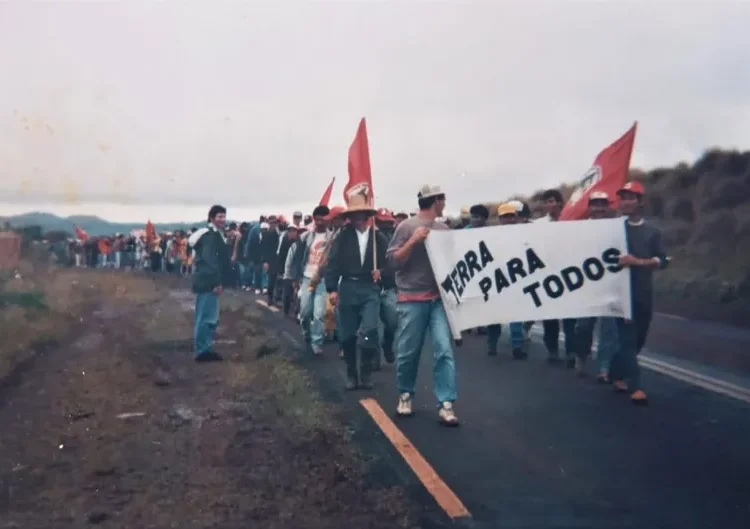Forty years ago, in the city of Cascavel, in the west region of Paraná state, peasants from all over Brazil came together to form a national movement to fight for agrarian reform. Then, the Landless Workers' Movement (MST) was born.
"I participated in the meeting with the certainty that we were going to form a steady and strong organization. We defined the goals – land, agrarian reform and social organization – and the principles – it was going to be an independent people’s movement,” says Jaime Calegari, a historic militant from the MST-Paraná state, who was at that First National Meeting and is now camped in the Herdeiros da Terra community, in Rio Bonito do Iguaçu.
The year was 1984. Democracy was a novelty in Brazil, and people’s movements were on the rise. In the countryside, the struggle for land was taking place regionally, through movements such as the Landless Farmers of Western Paraná (Mastro, in Portuguese) and the Landless Farmers of Southwestern Paraná (Mastes, in Portuguese), of which Calegari was a member.
"The mechanization of the countryside was advancing strongly and was excluding young people," he says. "They were young people who wanted to stay on the land. We held meetings in each city and town and the young people said they wanted to work," he recalls.
At the beginning of the movement, Calegari says it was necessary to overcome prejudices that existed even among some peasants, who didn't agree with occupying land. "Then we explained to them that we were occupying [the land] to show the government that there is land and there are people's demands," he says.
The first occupation Calegari took part in was in June 1984, in Mangueirinha, in the southwest area of Paraná state. He was 23 years old at the time. Since then, he has spent 34 years working on the MST's so-called mass front and has participated in many occupations in different parts of the state. "We went on walks and did grassroots work showing what the MST was about: a struggle for land, food and healthy food," he says.
Over the years, the activist says he has seen the movement adapt to the needs of each era. In addition to the peasants who needed land to work and live on, the movement also expanded into the cities, with the aim of recovering workers who had left the countryside and wanted to return.
From that 1984 meeting of around 100 people, the MST is now 40 years old, with around 400,000 settled families and another 70,000 encamped families organized in 24 states across Brazil. As a result of the landless families' work, the movement has 185 cooperatives, 1,900 associations and 120 agro-industries.
Calegari recalls that, back in 1984, he hoped that a national peasant movement would emerge in Cascavel and "overcome governments" and escape the elimination attempts that would come from the right wing and the co-optation that would come from center political groups. Today, he says MST's emergence was a victory for the whole country.
"Society has gained thousands of landless families who are no longer hungry and are producing food for everyone. As well as land, there's education. The movement has taken many people out of illiteracy," Calegari said, referring to over 100,000 adults who have been taught to read and write by the MST in Youth and Adult Education (EJA) campaigns, based on the Cuban literacy method "Yes, I Can".




